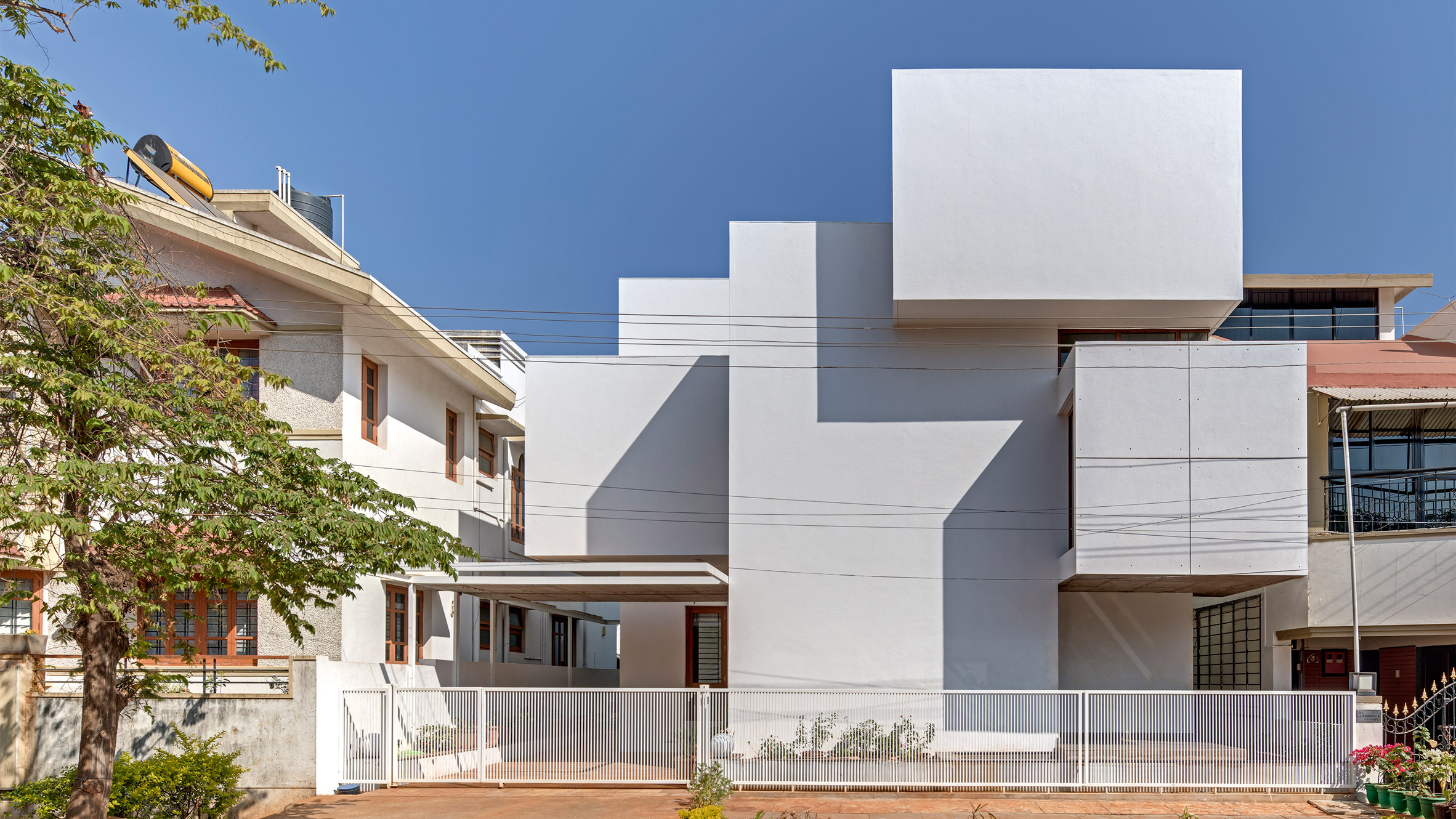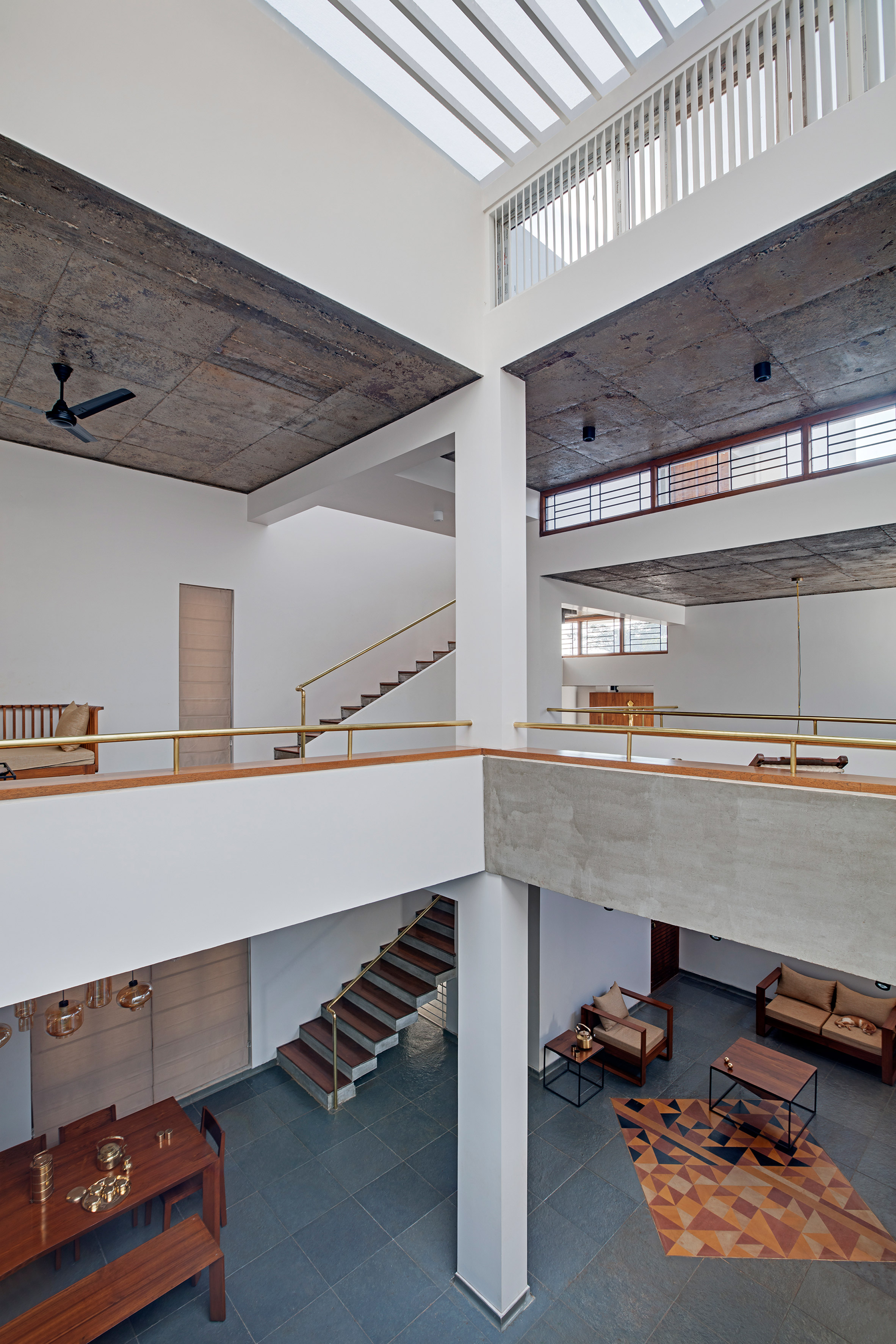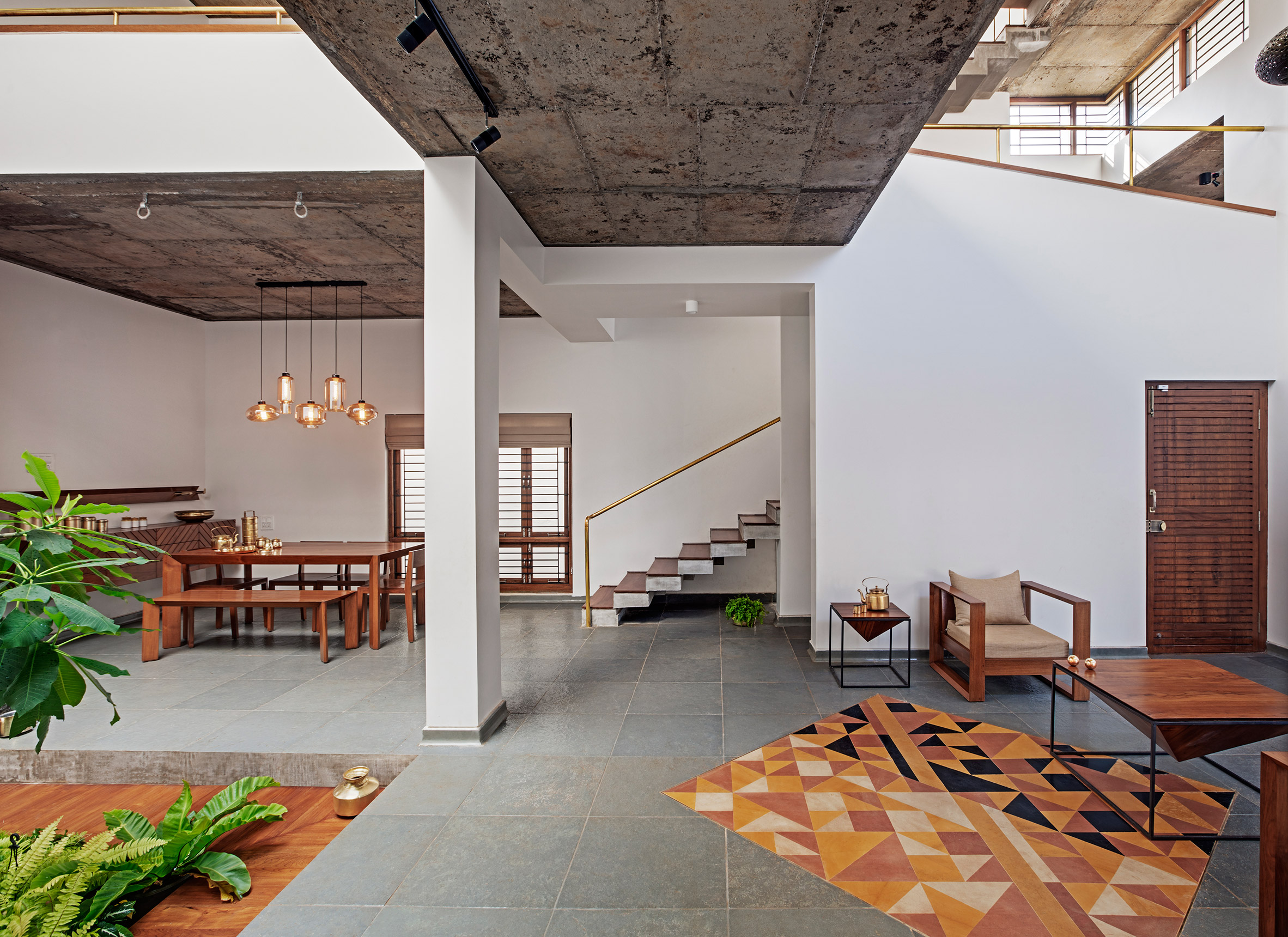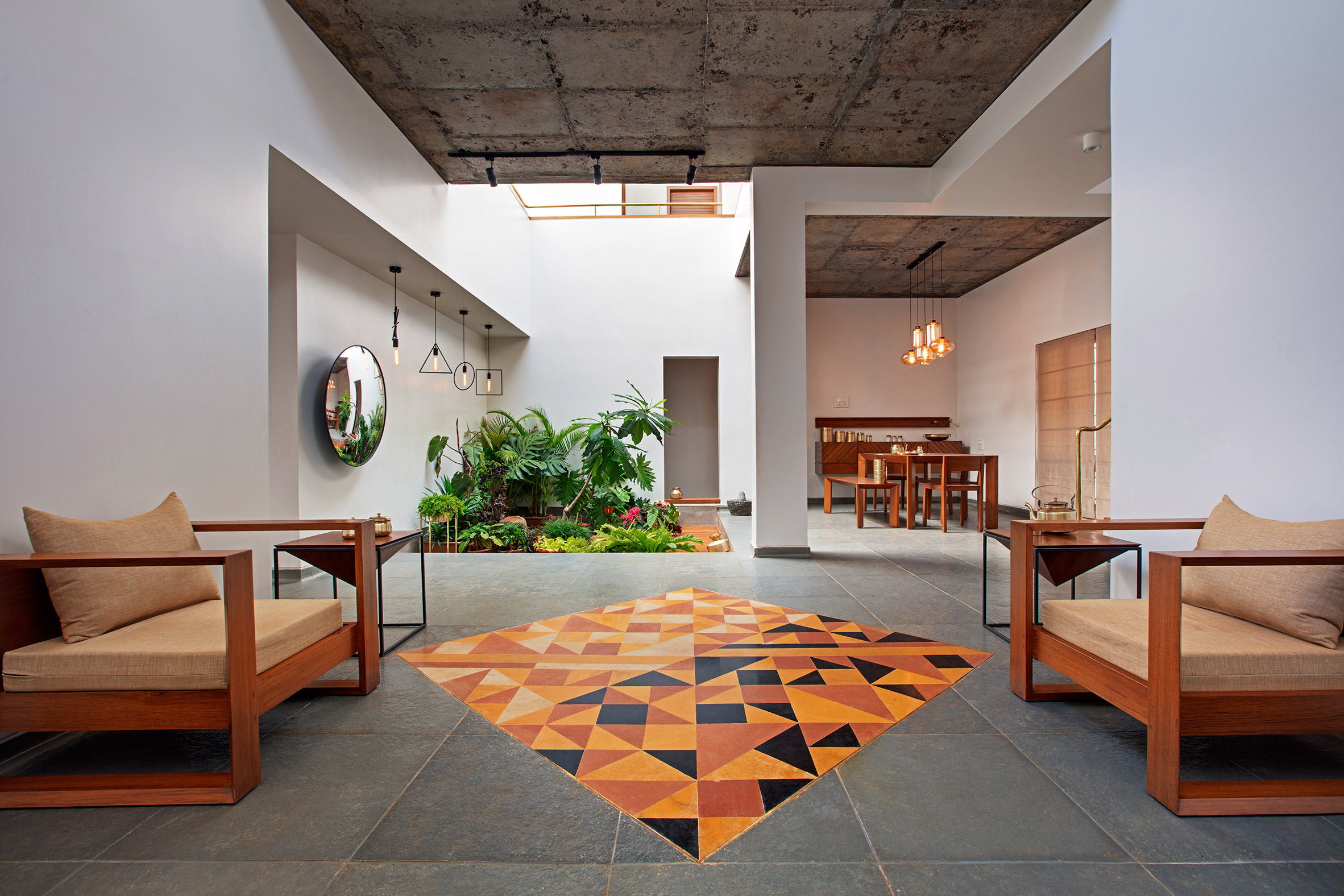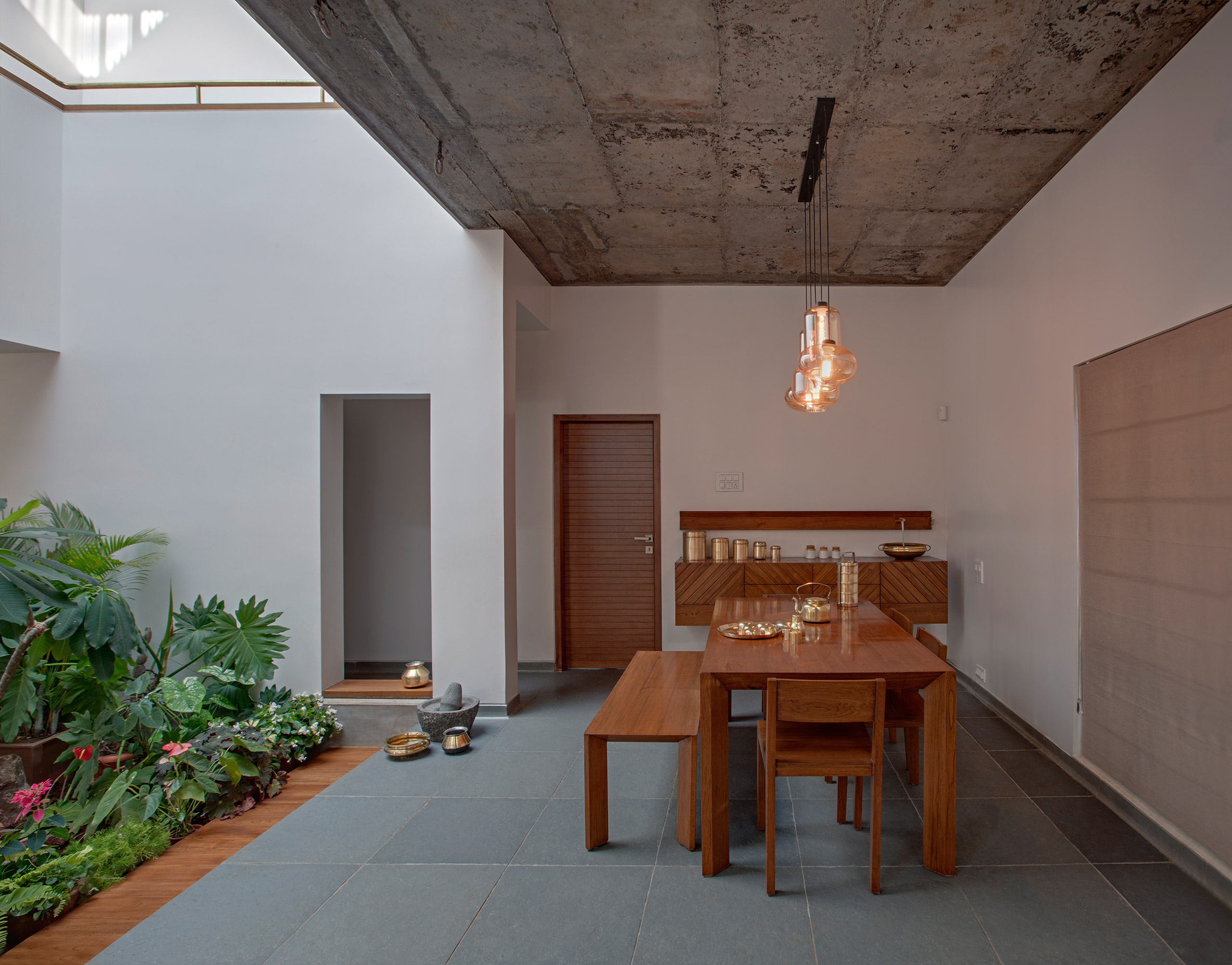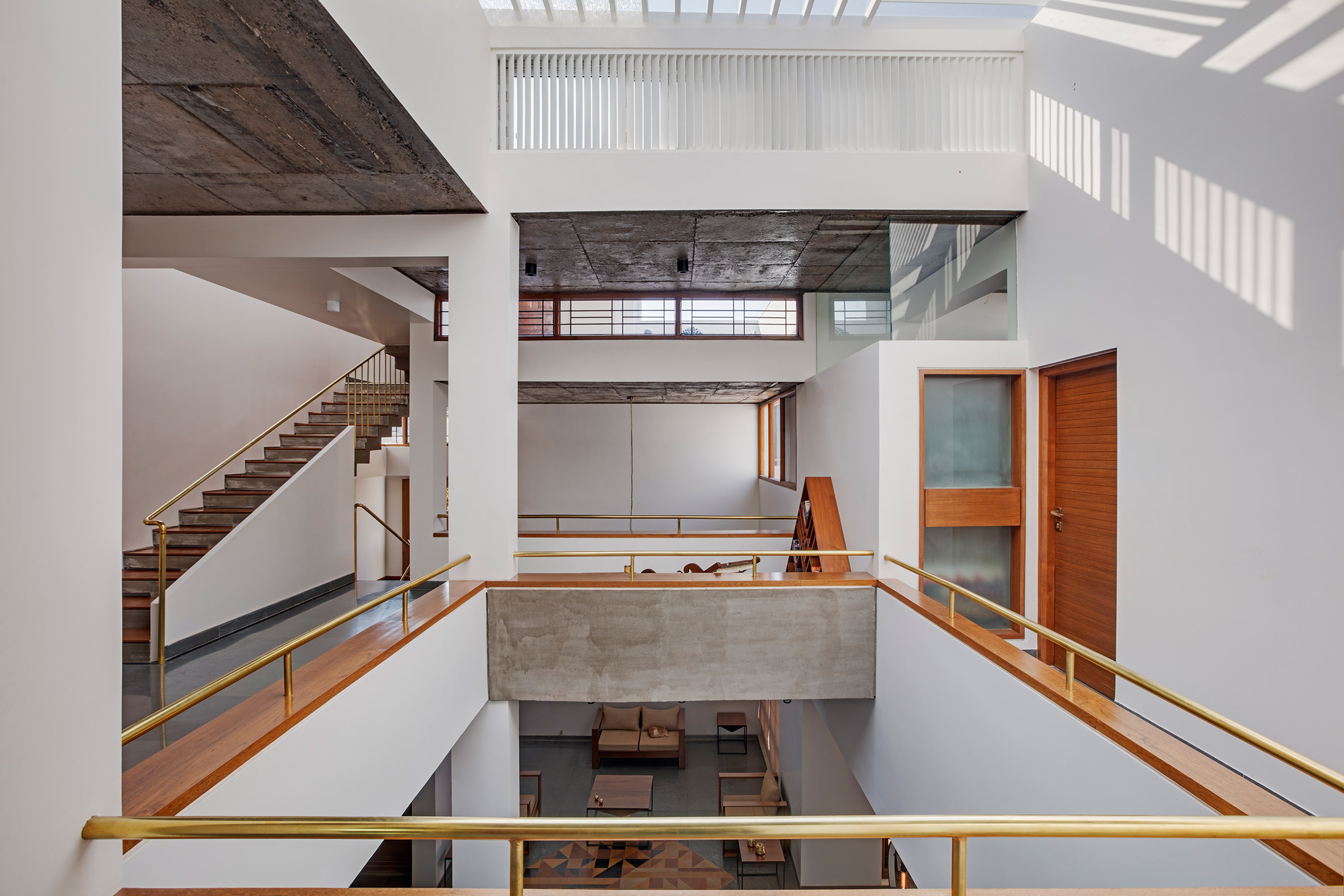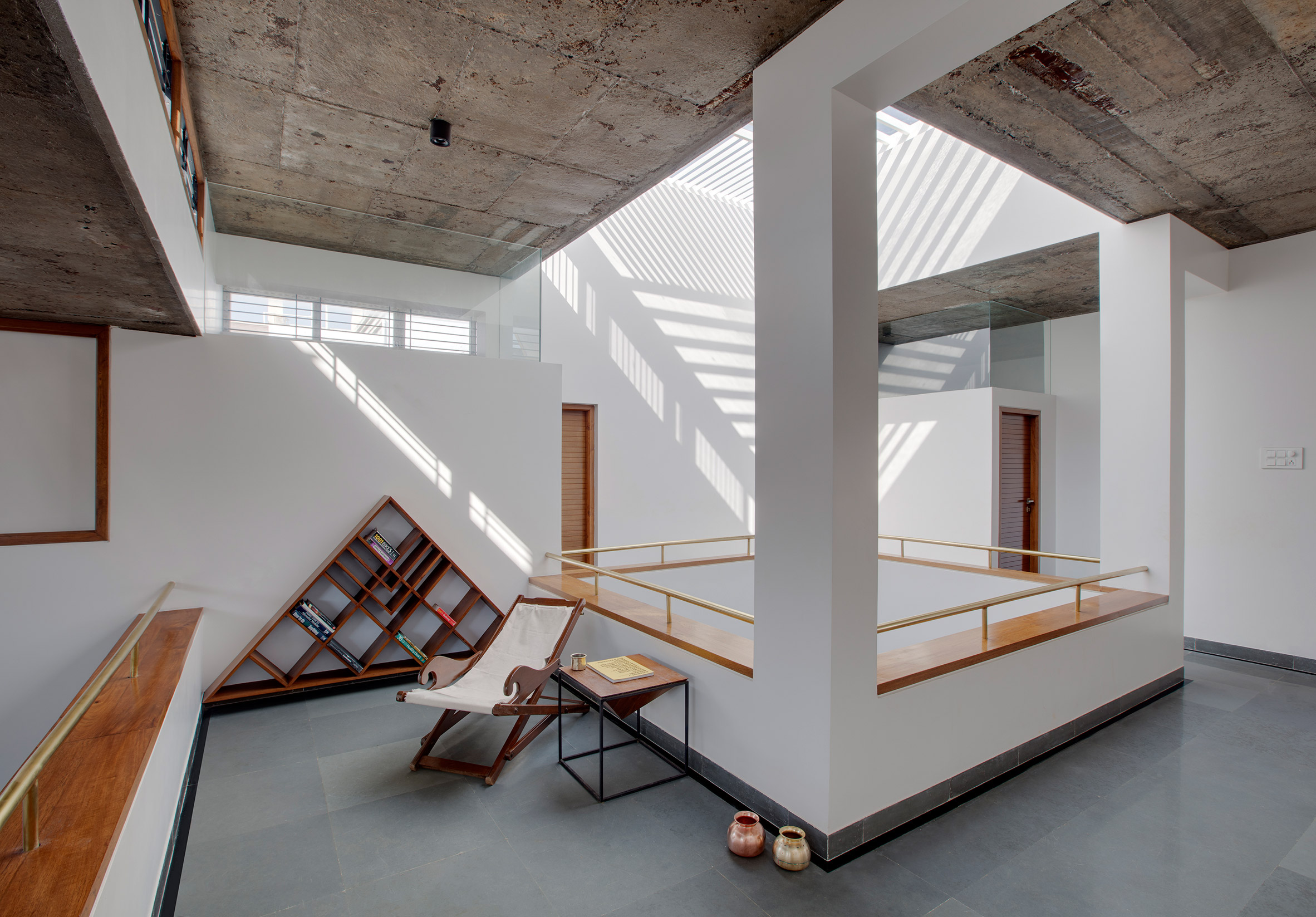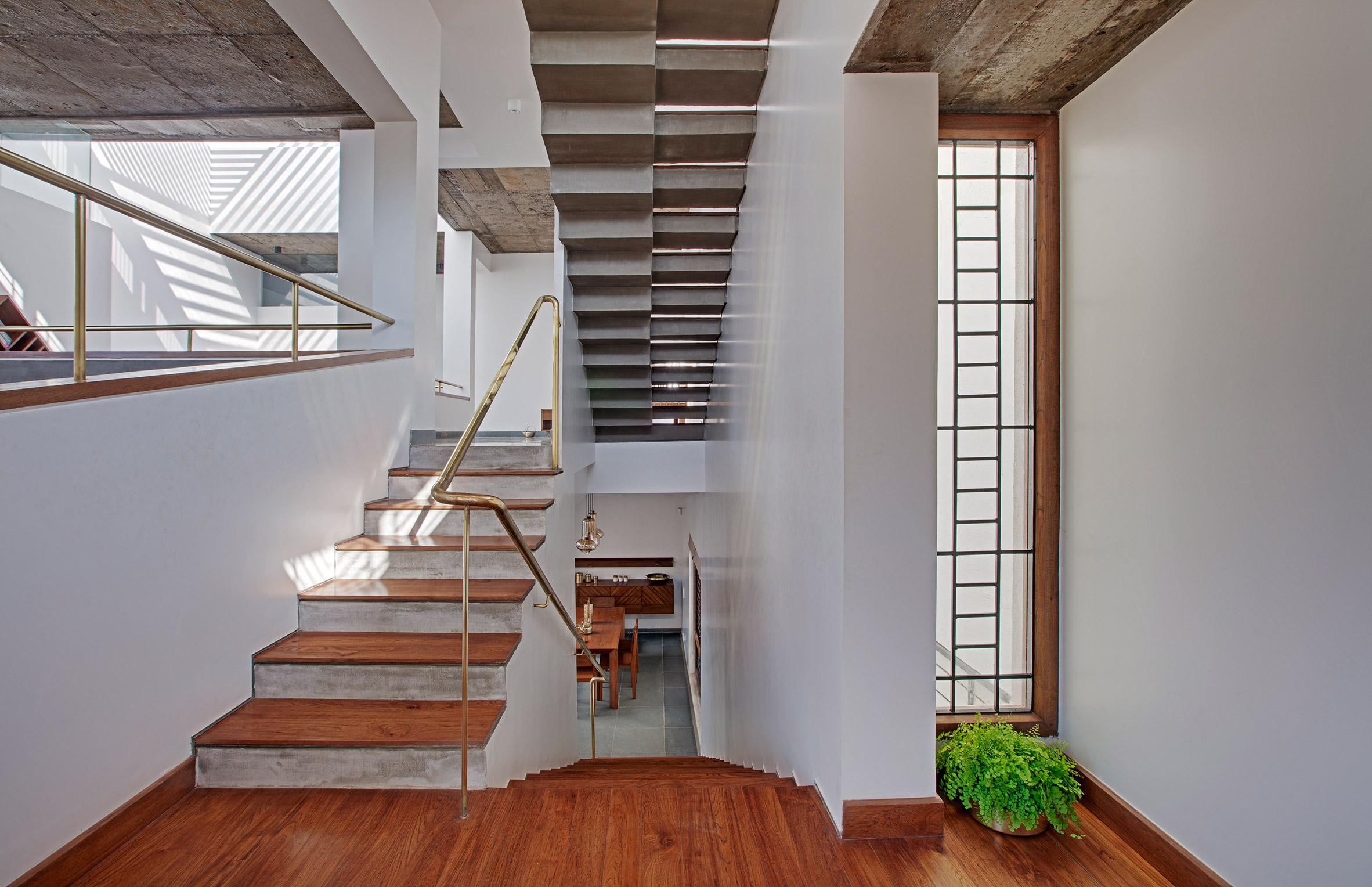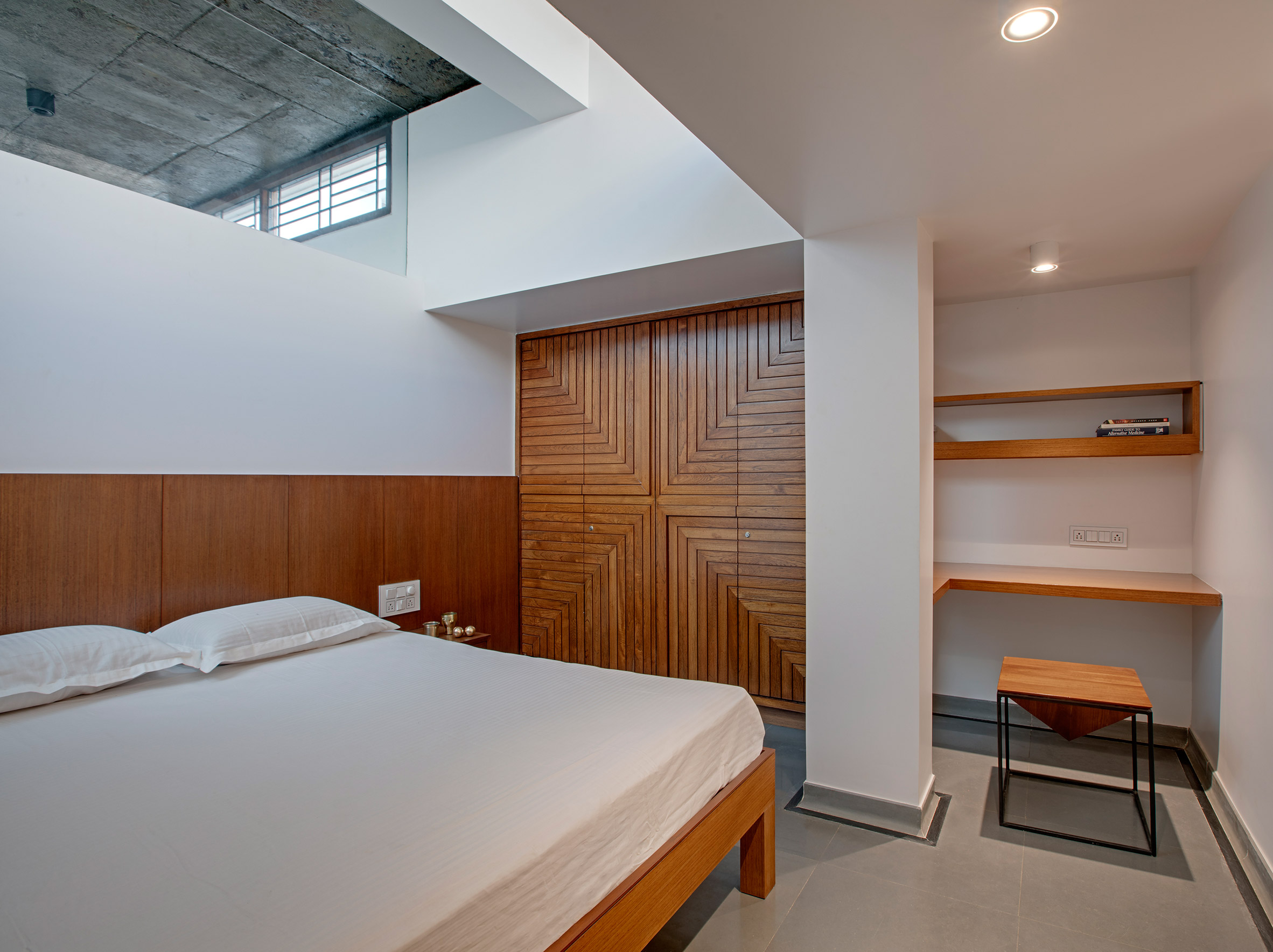The sculptural facade of this house in the Indian city of Belgaum comprises staggered blocks containing rooms that extend from a central courtyard full of plants.
Padival House was designed by local Anahata studio for a young couple with two children, who wanted a modern home to sit on a site in a typical residential neighborhood.
The previous family home in the coastal town of Mangalore was a traditional villa set around a courtyard. The architects sought to repeat the feel of this building in the design of the contrasting contemporary urban house.
"The idea was to create a purest architecture of architecture," said Anahata, of architecture stripped of its non-essential elements, reduced only to its basic elements and to the feelings that space itself evokes. "
A predominantly closed facade with a series of staggered volumes was used in response to the proximity of the building to a busy road.
Each block reflects the layout of the internal program and results in a multidimensional surface that alters in appearance as the sun passes through it during the day.
"The composite wall is designed to resemble a fabric - very light and absent, keeping the composition unchanged," said the architects. "The house tries to be a work of art".
Inside the building, the central courtyard is surrounded by areas designated as specific functions. On the ground floor, a living space to one side of the entrance foyer flows smoothly into the dining room.
The heights of the ceilings that vary along this open floor space correspond to the layout of the superior rooms. A library nestled on a mezzanine level overlooks the courtyard on one side and the lounge on the other.
A full height atrium covered with a large ceiling light draws natural lighting through the floors to the patio and dining area.
The gratings that surround this glazed surface and other light high above the stairs constantly project shifting patterns of light and shadow across the white painted interior walls.
"Light as a building material is sculpted carefully to define the spaces and their functionalities," said Anahata. "As the sunlight changes throughout the day, the shadows make the space dynamic and changing in all seasons."
Glass windows in the upper levels allow light entry and create visual connections between the central courtyard and the surrounding rooms, including the bedrooms.
A staircase that ascends along one side of the building connects the ground floor with a prayer area housed in a box that cantilevers the facade.
The stairs continue to the family area containing the library and the rooms, before finally arriving at a barsati at the top of the house.
This small traditional rooftop room with an adjoining terrace acts as a threshold to a large terrace, and can be used as a pantry to serve food and drinks during the holidays.
Interior details and furniture characterized by strong use of color, line, space and light are influenced by the Indian artist S H Raza. In particular, a decorative stone work of art placed on the floor of the living room and the tables with their pyramidal wood forms evoke one of the paintings of Raza.
A concrete roof helps to join the interior spaces, which present a palette of white plaster, brass, wood and natural stone.
